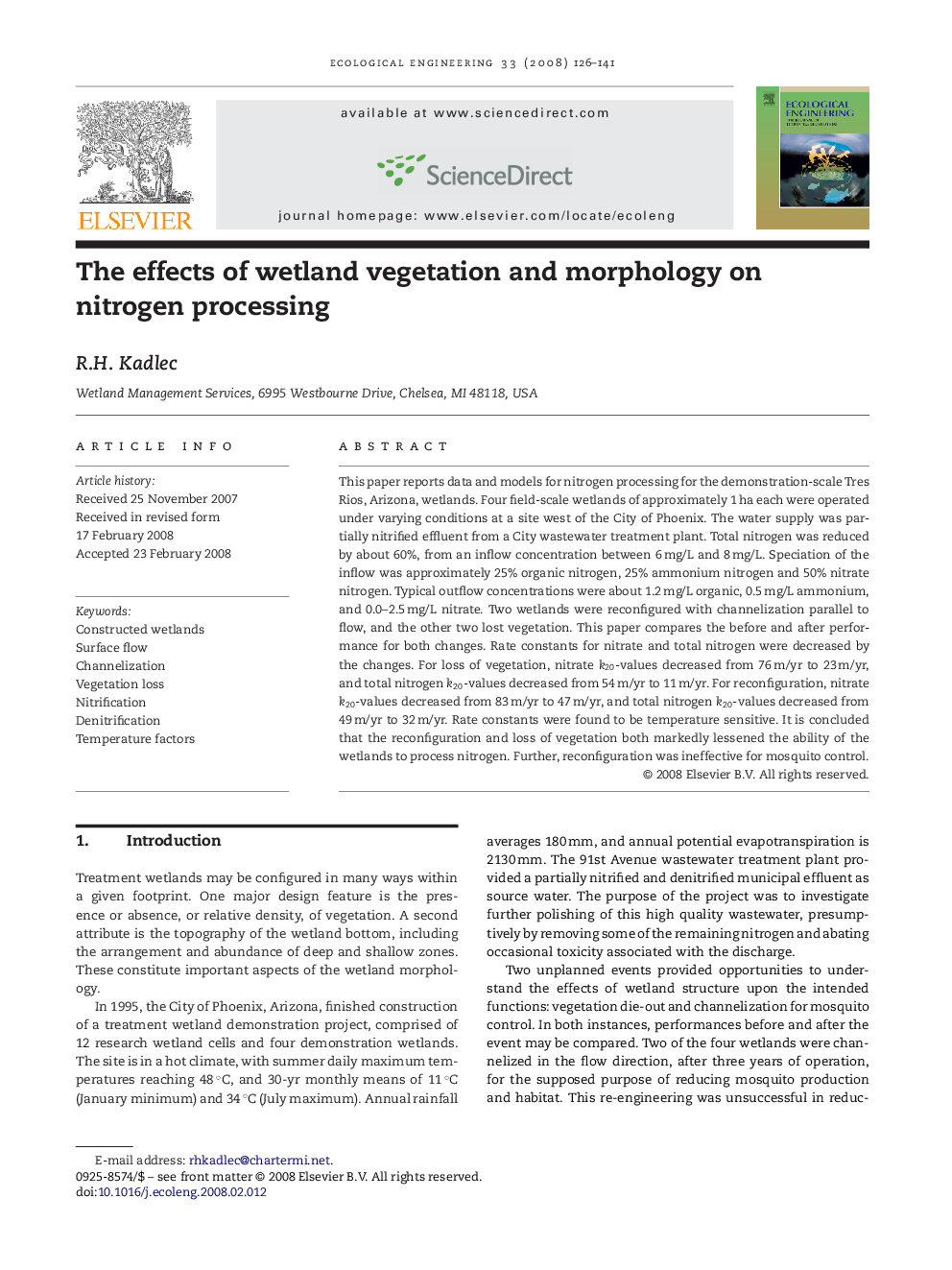| Article ID | Journal | Published Year | Pages | File Type |
|---|---|---|---|---|
| 4390779 | Ecological Engineering | 2008 | 16 Pages |
This paper reports data and models for nitrogen processing for the demonstration-scale Tres Rios, Arizona, wetlands. Four field-scale wetlands of approximately 1 ha each were operated under varying conditions at a site west of the City of Phoenix. The water supply was partially nitrified effluent from a City wastewater treatment plant. Total nitrogen was reduced by about 60%, from an inflow concentration between 6 mg/L and 8 mg/L. Speciation of the inflow was approximately 25% organic nitrogen, 25% ammonium nitrogen and 50% nitrate nitrogen. Typical outflow concentrations were about 1.2 mg/L organic, 0.5 mg/L ammonium, and 0.0–2.5 mg/L nitrate. Two wetlands were reconfigured with channelization parallel to flow, and the other two lost vegetation. This paper compares the before and after performance for both changes. Rate constants for nitrate and total nitrogen were decreased by the changes. For loss of vegetation, nitrate k20-values decreased from 76 m/yr to 23 m/yr, and total nitrogen k20-values decreased from 54 m/yr to 11 m/yr. For reconfiguration, nitrate k20-values decreased from 83 m/yr to 47 m/yr, and total nitrogen k20-values decreased from 49 m/yr to 32 m/yr. Rate constants were found to be temperature sensitive. It is concluded that the reconfiguration and loss of vegetation both markedly lessened the ability of the wetlands to process nitrogen. Further, reconfiguration was ineffective for mosquito control.
